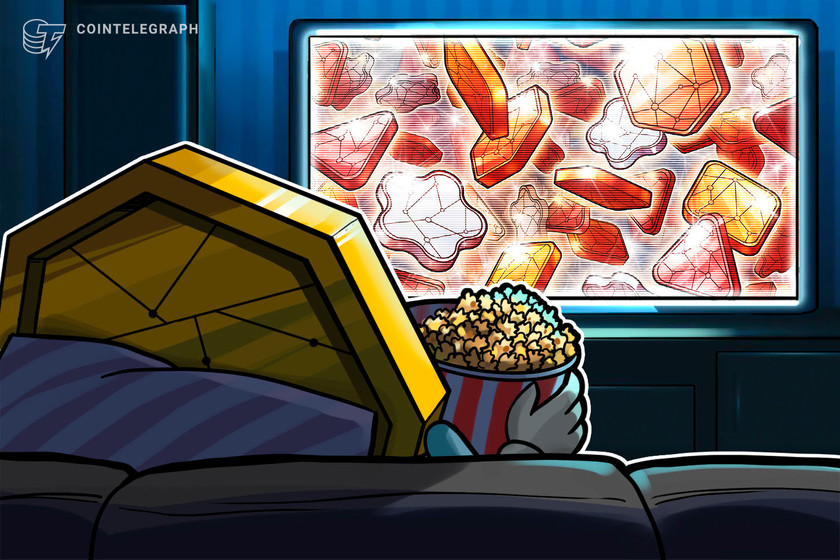Ethereum’s market cap surpasses GM, CME, and tech stocks — What’s next?
2020 has been an impressive year for the Ethereum network and Ether (ETH) price. In November the Eth2 deposit contract quietly launched and before the end of the month the contract had reached capacity with 524,288 Ether locked.
When Black Thursday occured on March 12, nearly every cryptocurrency had its price crushed and Ether was not spared from the carnage. After trading for as little as $86 on March 12, Ether price recovered to post a year-to-date gain of 322% and the altcoin set a 2020 high at $635.70 on Dec.1.
Despite the accolades being lauded upon Bitcoin as it broke to a new all-time high today, Ethereum price has actually outperformed BTC in 2020.

Despite this stellar performance, Ether is still approximately 59% below its 2018 all-time high at $1,431 all-time high. Even with the price sitting far below its all-time high, the top altcoin’s $67 billion market capitalization has surpassed automaker General Motors and that of the CME Group.
It is worth noting that these comparisons are debatable as listed companies have assets, liabilities, capital expenditure, sales, and employees. While the same cannot be said for Ether, traders will compare the two nonetheless.
Long-term investors tend to establish multiple competition scenarios, growth analysis, and run valuation multiples. Meanwhile, traders will care mostly about price and volume.
Aside from the differences in the two assets and the drivers of their value, it is worth noting that some of the newer trading platforms offer cryptocurrencies and stock trading simultaneously.
Mobile app-based brokerages like E*Trade, RobinHood, and eToro have tens of millions of users and as the effortless on-ramp offered by these platforms will make it easier for a wider swath of investors to interact with digital assets.
How Ether compares against companies with similar market capitalization
Colgate-Palmolive is a member of the S&P 500 index and the company has a $73 billion market cap. The company was founded in 1806 and presented a $2.7 billion net income over the past 12 months.
U.S. Bancorp also has a $67 billion market cap, is the fifth-largest American bank and also is a member of the S&P 500. The company was founded in 1968 and also owns Elevon, a credit card processor.
Lastly, at a $64 billion market cap, CME Group owns the Chicago Mercantile Exchange, which was founded 172 years ago. Its net income totaled $2.1 billion over the last 12 months, and the stock also comprises the S&P 500 index.
While Ether shares a similar sized market cap, it is nothing like the companies listed above. The cryptocurrency holds no balance sheet or income statement. Therefore Ether behaves more like commodities like gold, oil, and Bitcoin. The chairman of the U.S. Commodity Futures Trading Commission (CFTC) has also expressed a similar point of view.

As clearly depicted in the chart above, there are hardly any similarities between Ether and listed companies. While those stocks trade an average of $283 million per day, the cryptocurrency does over $2 billion, according to data from Messari.
The same can be said about Ether’s volatility, the standard measure for average daily price oscillations. Cryptocurrencies tend to have much stronger movements, mostly because they do not rely on sales or growth expectations.

While Ether’s annualized 90-day rate surpasses 80%, it stands at 20% for Colgate-Palmolive and 32% for CME. Meanwhile, U.S. Bancorp shows a 47% volatility and, although this is unusually high for most equities, it is still a mile away from the levels seen among cryptocurrencies.
Growth companies have given Ether a run for the money
Not all companies are alike, and a select few tech ones have been competing with Ether’s bull run. For example, Zillow has been on a run with a $25 billion market capitalization, and so has Square, which is at $94 billion.

Both Zillow and Square managed to double their revenue over the past two years and each tremendous potential market share growth within their sector.
Unlike Ether, they carry the weight of capital expenditures, marketing, and other growing pains. Despite this, both still managed to post 220% gains over the past thirteen months.
Crypto and stocks are becoming less of an apples and oranges conversation
It is a relatively fruitless exercise to imagine the potential market for Ether. First, cryptocurrency penetration is minimal, and recent studies show that only 7% of Americans have bought Bitcoin. Therefore, the percentage of those effectively using the Ethereum ecosystem is much smaller.
Unlike the listed companies, Ether is a part of an open-source software. Thus upgrades and new system interconnections are possible. While it’s difficult to affix value to the network’s ability to evolve, the launch of today’s Ethereum 2.0 genesis block could be viewed as an example since Ether price saw an impressive rally leading into the upgrade.
To conclude, it is fair to say that Ether has much higher potential than the vast majority of listed companies but this doesn’t mean investors will disregard evaluating its market capitalization against growth tech companies.
The views and opinions expressed here are solely those of the author and do not necessarily reflect the views of Cointelegraph. Every investment and trading move involves risk. You should conduct your own research when making a decision.









